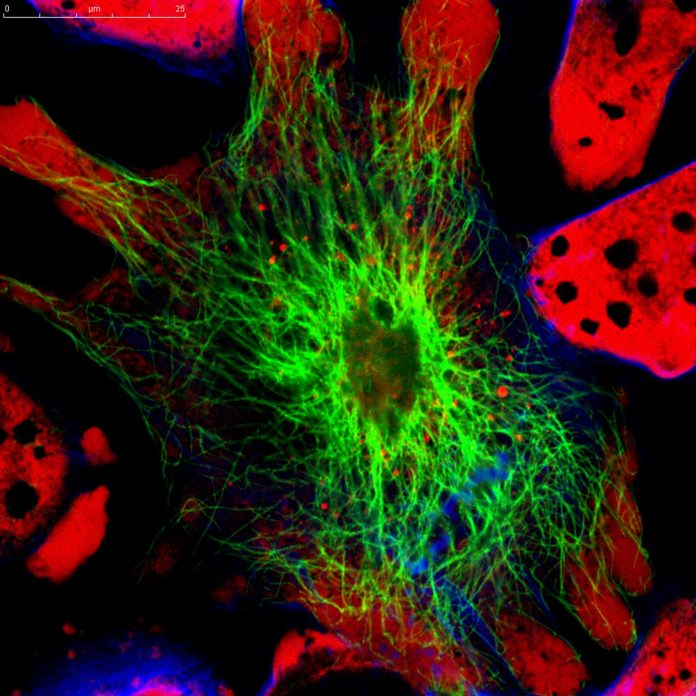
A team of Austrian researchers using single-cell sequencing has uncovered how cancer cells prevent cells in their environment from fighting the tumor. The research, published in Nature Communications and led by Sabine Taschner-Mandl, PhD, head of the Tumor Biology Group at St. Anna Children’s Cancer Research Institute (St. Anna CCRI), and Nikolaus Fortelny, PhD, assistant professor at Paris Lodron University of Salzburg, suggest that understanding this activity presents a novel target for treating the disease.
“Metastasis is the major cause of cancer-related deaths,” the researchers wrote. “Neuroblastoma (NB), a childhood tumor has been molecularly defined at the primary cancer site, however, the bone marrow (BM) as the metastatic niche of NB is poorly characterized. Here we perform single-cell transcriptomic and epigenomic profiling of BM aspirates from 11 subjects spanning three major NB subtypes and compare these to five age-matched and metastasis-free BM, followed by in-depth single-cell analyses of tissue diversity and cell-cell interactions, as well as functional validation.”
The study examined the cell architecture and cell-to-cell communication of neuroblastoma metastases of two major genetic subtypes (MYCN amplification or ATRX mutations) and those without such changes using single-cell transcriptomics and epigenomics.
“Until now, only primary tumors have been studied in such detail, but not neuroblastoma metastases,” said Irfete Fetahu, PhD, co-first author as well as co-corresponding author of the study and postdoc in the Tumor Biology Group.
Neuroblastoma is the most common solid tumor in infants and young children. “We specifically studied bone marrow metastases because recurrences often originate there. The tumor cells seem to manipulate their environment so that it supports their growth instead of fighting them,” explained Taschner-Mandl.
The scientists developed algorithms that enabled them to analyze different cells in the bone marrow as well as to model their interactions.
“Our analysis has shown that certain cells, so-called monocytes, react to unwanted invaders. In the course of this, they foster growth processes and release cytokines that stimulate tumor growth,” explained Fetahu. Interestingly, investigations at the epigenetic level showed that although monocytes in the tumor microenvironment are activated to attack cancer cells, they are unable to respond appropriately to these signals. “These monocytes receive contradictory messages. As a result, they are no longer able to fight the tumor.”
The communication between neuroblastoma cells and bone marrow or monocytes is to a large extent regulated by the proteins MK (midkine), MIF (macrophage migration inhibitory factor), and associated molecules. Signaling pathways controlled by these proteins are upregulated in immune cells. “Drugs targeting MK and MIF disrupt this pathological interaction and are currently under investigation. Through selective inhibition, it could be possible to return these pathologically altered monocytes to their original state,“ said Taschner-Mandl.
The scientists also found that cellular plasticity is retained during metastasis.
“We show that cellular plasticity of NB tumor cells is conserved upon metastasis and tumor cell type composition is NB subtype-dependent, the researchers wrote. “NB cells signal to the BM microenvironment, rewiring via macrophage migration inhibitory factor and midkine signaling specifically monocytes, which exhibit M1 and M2 features, are marked by activation of pro- and anti-inflammatory programs, and express tumor-promoting factors, reminiscent of tumor-associated macrophages.”
Their findings are the first to analyze bone marrow metastases from childhood tumors of the nervous system using modern single-cell sequencing and may lead to novel therapeutic strategies for neuroblastoma patients that respond poorly to treatment.











